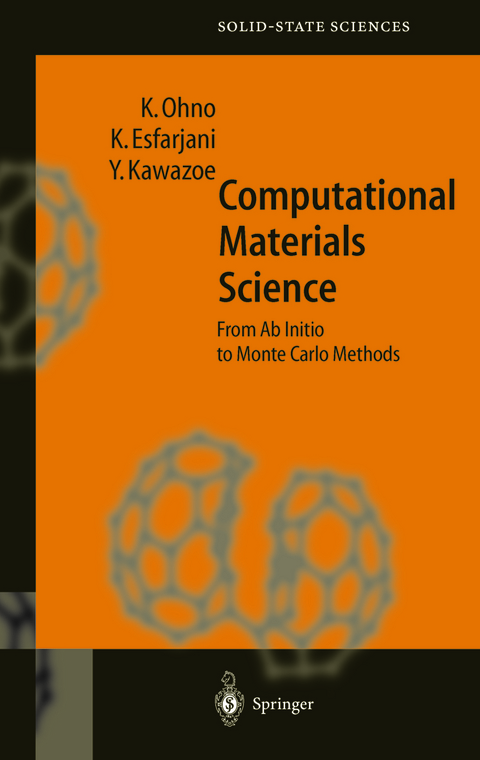
Computational Materials Science
Springer Berlin (Verlag)
978-3-642-64155-8 (ISBN)
1. Introduction.- 1.1 Computer Simulation as a Tool for Materials Science.- 1.2 Modeling of Natural Phenomena.- 2. Ab Initio Methods.- 2.1 Introduction.- 2.2 Electronic States of Many-Particle Systems.- 2.3 Perturbation and Linear Response.- 2.4 Ab Initio Molecular Dynamics.- 2.5 Applications.- 2.6 Beyond the Born-Oppenheimer Approximation.- 2.7 Electron Correlations Beyond the LDA.- References.- 3. Tight-Binding Methods.- 3.1 Introduction.- 3.2 Tight-Binding Formalism.- 3.3 Methods to Solve the Schrödinger Equation for Large Systems.- 3.4 Self-Consistent Tight-Binding Formalism.- 3.5 Applications to Fullerenes, Silicon and Transition-Metal Clusters.- References.- 4. Empirical Methods and Coarse-Graining.- 4.1 Introduction.- 4.2 Reduction to Classical Potentials.- 4.3 The Connolly-Williams Approximation.- 4.4 Potential Renormalization.- References.- 5. Monte Carlo Methods.- 5.1 Introduction.- 5.2 Basis of the Monte Carlo Method.- 5.3 Algorithms for Monte Carlo Simulation.- 5.4 Applications.- References.- 6. Quantum Monte Carlo (QMC) Methods.- 6.1 Introduction.- A. Molecular Dynamics and Mechanical Properties.- A.l Time Evolution of Atomic Positions.- A.2 Acceleration of Force Calculations.- A.2.1 Particle-Mesh Method.- A.2.2 The Greengard-Rockhlin Method.- References.- B. Vibrational Properties.- References.- C. Calculation of the Ewald Sum.- References.- D. Optimization Methods Used in Materials Science.- D.l Conjugate-Gradient Minimization.- D.2 Broyden's Method.- D.3 SA and GA as Global Optimization Methods.- D.3.1 Simulated Annealing (SA).- D.3.2 Genetic Algorithm (GA).- References.
| Erscheint lt. Verlag | 23.9.2011 |
|---|---|
| Reihe/Serie | Springer Series in Solid-State Sciences |
| Zusatzinfo | X, 329 p. |
| Verlagsort | Berlin |
| Sprache | englisch |
| Maße | 155 x 235 mm |
| Gewicht | 521 g |
| Themenwelt | Naturwissenschaften ► Physik / Astronomie ► Allgemeines / Lexika |
| Naturwissenschaften ► Physik / Astronomie ► Theoretische Physik | |
| Schlagworte | algorithms • computer simulation • Model • Modeling • Monte Carlo • Monte Carlo simulation • Optimization • Potential • Simulation |
| ISBN-10 | 3-642-64155-5 / 3642641555 |
| ISBN-13 | 978-3-642-64155-8 / 9783642641558 |
| Zustand | Neuware |
| Haben Sie eine Frage zum Produkt? |
aus dem Bereich


